The business world is a dynamic and ever-evolving landscape. Whether you’re an aspiring entrepreneur, a seasoned executive, or simply someone interested in understanding the intricacies of the modern economy, reading insightful business books can provide invaluable knowledge, inspiration, and a competitive edge. This comprehensive guide explores 10 of the best business books that have had a profound impact on readers and continue to shape the minds of leaders worldwide.
Also read….Top 10 Share market books to master trading-click here
10. “Atomic Habits” by James Clear
- Core Concepts: This book focuses on the power of small, consistent habits in achieving significant goals. Clear outlines a practical framework for building good habits and breaking bad ones.
- Key Takeaways: Focus on small, incremental improvements and build habits that compound over time.
- Impact: “Atomic Habits” has become a best-seller, empowering individuals to make lasting changes in their lives through the power of habit formation.
“Atomic Habits” by James Clear
This book is a powerful guide to building good habits and breaking bad ones. It emphasizes the importance of small, consistent changes and how they can lead to significant, long-term results.
Key Concepts:
- The 1% Rule: The core principle of the book. Clear argues that improving by just 1% each day leads to significant progress over time. Conversely, getting 1% worse each day can have devastating consequences.
- The Four Laws of Behavior Change: Clear outlines a simple yet effective framework for building good habits:
- Make it Obvious: Increase your awareness of your current habits and identify cues that trigger them.
- Make it Attractive: Increase your motivation and make your desired habits more appealing.
- Make it Easy: Reduce friction and make it easier to perform good habits.
- Make it Satisfying: Reward yourself for completing good habits and make them enjoyable.
- Identity-Based Habits: Clear emphasizes that true behavior change comes from identifying with the person you want to become. Your habits should align with your desired identity.
- The Two-Minute Rule: Start with habits that take less than two minutes to complete. This makes them easier to initiate and build momentum.
- Focus on Systems, Not Goals: Instead of focusing on achieving specific goals, focus on building systems that support your desired behaviors.
Practical Applications:
- Building Good Habits:
- Exercise: Start with a single push-up or a short walk each day.
- Reading: Read just one page of a book each day.
- Healthy Eating: Add one serving of vegetables to your meals.
- Breaking Bad Habits:
- Reduce Screen Time: Put your phone in another room before bed.
- Quit Smoking: Replace cigarettes with healthier alternatives like chewing gum.
- Reduce Sugar Intake: Gradually decrease your sugar intake by small increments.
Impact:
“Atomic Habits” has resonated with millions of readers worldwide, empowering individuals to make lasting changes in their lives. It has become a best-seller and a valuable resource for personal development and self-improvement.
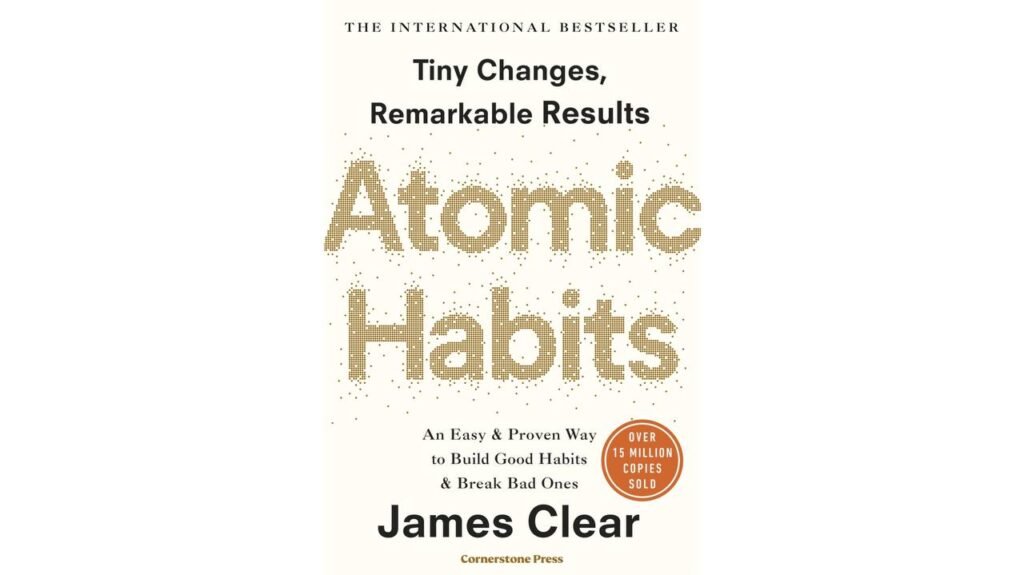
9. “The 7 Habits of Highly Effective People” by Stephen R. Covey
- Core Concepts: This influential book focuses on developing effective personal and interpersonal skills. Covey outlines seven principles for personal and professional effectiveness, including proactiveness, prioritizing, and seeking first to understand, then to be understood.
- Key Takeaways: Develop strong character, prioritize long-term goals, and build meaningful relationships. Focus on principles and values rather than short-term gains.
- Impact: “The 7 Habits” has become a cornerstone of leadership development programs and has helped countless individuals improve their personal and professional lives.
“The 7 Habits of Highly Effective People” by Stephen R. Covey
This timeless classic, first published in 1989, has become a cornerstone for personal and professional development worldwide. Covey, a renowned educator and consultant, presents a holistic approach to living a fulfilling and effective life, emphasizing character ethics and principle-centered living.
The 7 Habits:
- Be Proactive:
- Focus: Taking responsibility for your own actions and choices. Recognizing that you are the creator of your own destiny.
- Key Takeaway: Instead of blaming external factors or circumstances, proactively identify and address challenges.
- Begin with the End in Mind:
- Focus: Defining your desired outcomes and aligning your actions with your values and goals. Creating a personal mission statement to guide your life.
- Key Takeaway: Set clear goals and visualize your desired future. This habit encourages you to live with purpose and intention.
- Put First Things First:
- Think Win-Win:
- Focus: Seeking mutually beneficial solutions in all interactions. Believing that success is not a zero-sum game.
- Key Takeaway: Cultivate a mindset of abundance and cooperation. Seek solutions that benefit all parties involved.
- Seek First to Understand, Then to Be Understood:
- Focus: Truly listening to others with empathy and seeking to understand their perspectives before expressing your own.
- Key Takeaway: Effective communication requires genuine listening. By truly understanding others, you build stronger relationships and foster deeper connections.
- Synergize:
- Focus: Valuing and leveraging the strengths and perspectives of others to achieve greater results.
- Key Takeaway: Teamwork and collaboration are essential for achieving shared goals. By valuing diversity and embracing different viewpoints, you can achieve more than you could alone.
- Sharpen the Saw:
- Focus: Continuous self-renewal and improvement in four key dimensions: physical, mental, social/emotional, and spiritual.
- Key Takeaway: Regularly invest in your personal and professional growth through exercise, learning, and meaningful relationships.

8. “The Innovator’s Dilemma” by Clayton Christensen
- Core Concepts: This book explores the challenges faced by established companies in adapting to disruptive innovations. Christensen argues that companies often fail to embrace new technologies and business models due to their focus on satisfying existing customers.
- Key Takeaways: Embrace disruptive innovation, even if it threatens existing businesses.
- Impact: “The Innovator’s Dilemma” has helped companies understand the importance of innovation and adapt to the changing competitive landscape.
“The Innovator’s Dilemma” by Clayton Christensen
This groundbreaking book explores why successful companies often fail when confronted with disruptive technological change.
Core Concepts:
- Disruptive Innovation: Christensen introduces the concept of “disruptive innovation.” This refers to a new technology or product that initially enters a market at the low end, often with inferior performance compared to existing technologies.
- Example: Early personal computers were inferior to mainframes in terms of processing power, but they were cheaper and more accessible, opening up new markets.
- Sustaining Technologies: These technologies improve the performance of existing products in established markets, catering to the demands of existing customers.
- Example: Faster processors, more memory in computers – these are examples of sustaining technologies.
- The Dilemma: The core dilemma faced by established companies is that they are highly responsive to the needs of their existing customers. They prioritize improving existing products (sustaining technologies) to meet the demands of their most profitable customers. This focus on incremental improvements can blind them to the disruptive potential of new technologies that initially appear unattractive to their existing customer base.
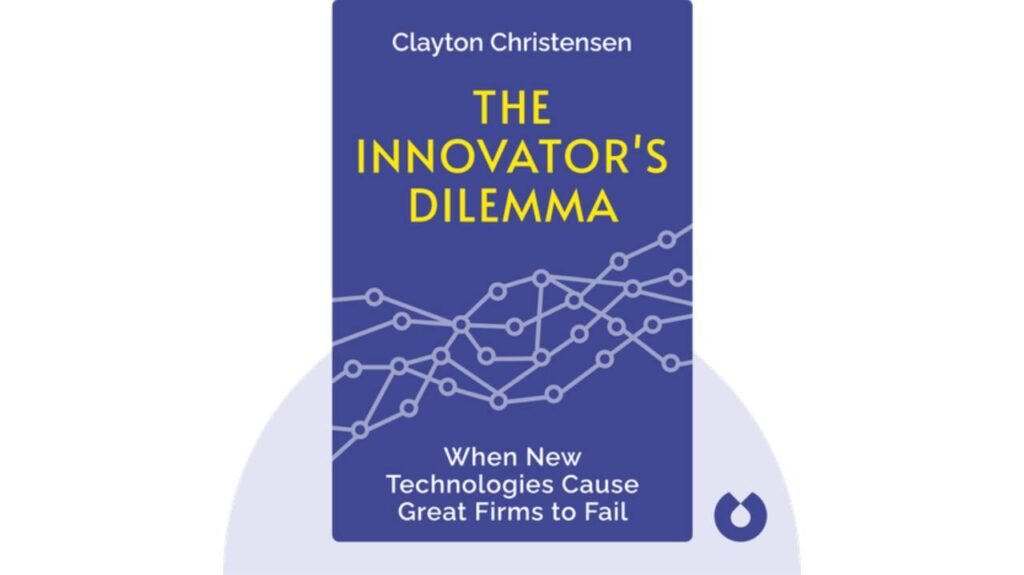
7. “Thinking, Fast and Slow” by Daniel Kahneman
- Core Concepts: This groundbreaking book explores the two systems of human thinking: System 1, which is fast, intuitive, and emotional, and System 2, which is slow, deliberate, and logical.
- Key Takeaways: Understand the biases and limitations of human judgment. Develop strategies to overcome cognitive biases and make more rational decisions.
- Impact: “Thinking, Fast and Slow” has revolutionized our understanding of human decision-making and has had a significant impact on fields such as economics, finance, and behavioral science.
“Thinking, Fast and Slow” by Daniel Kahneman:
This groundbreaking book explores the two systems that drive the way we think:
- System 1: This system operates automatically and quickly, with little or no effort and no sense of voluntary control. It’s intuitive, emotional, and often operates on autopilot.
- Examples: Recognizing faces, driving a car on an empty road, understanding simple sentences.
- System 2: This system allocates attention to the effortful mental activities that demand it, including complex computations. It’s slower, more deliberate, and more logical.
- Examples: Focusing on the voice of a particular person in a crowded room, looking for a specific person in a crowd, checking the validity of a complex logical argument.
Key Concepts:
- Cognitive Biases: The book delves into various cognitive biases that influence our judgments and decisions. These biases include:
- Availability Bias: Overestimating the likelihood of events that readily come to mind.
- Confirmation Bias: Tendency to seek out and interpret information that confirms existing beliefs.
- Framing Effects: How the presentation of information influences our decisions.
- Loss Aversion: The tendency to strongly prefer avoiding losses to acquiring gains.
- Prospect Theory: This theory, developed by Kahneman and Amos Tversky, describes how people make decisions under uncertainty. It highlights that people are more sensitive to potential losses than potential gains.
- Two Selves: The book introduces the concept of two selves: the “experiencing self” that lives life moment by moment and the “remembering self” that constructs memories and tells stories about the past.
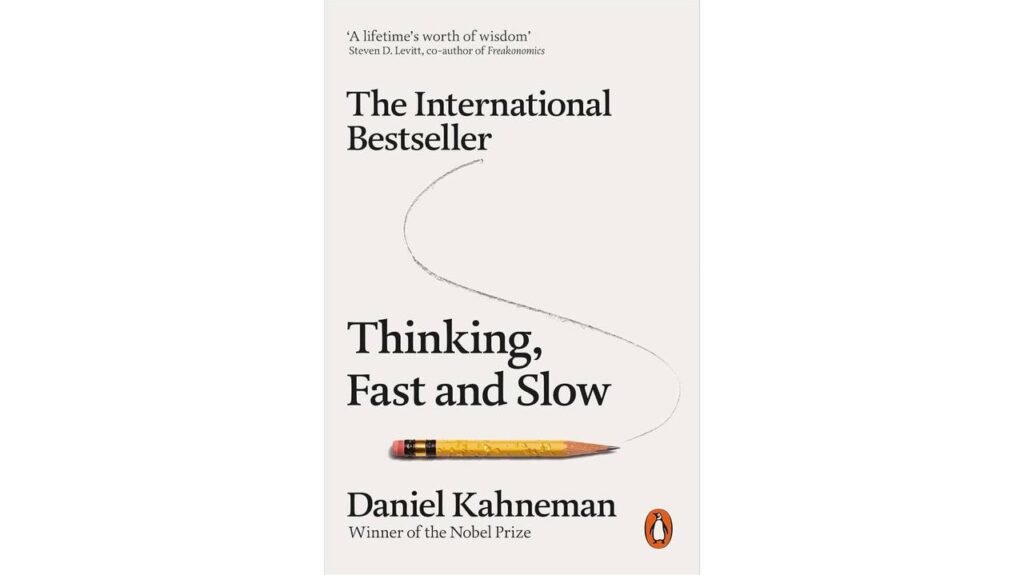
6. “Start with Why” by Simon Sinek
- Core Concepts: This book explores the importance of understanding and articulating the “why” behind your actions. Sinek argues that successful leaders and organizations inspire others by focusing on their purpose and values.
- Key Takeaways: Define your purpose and communicate it clearly to your audience. Inspire others by focusing on the “why” behind your actions.
- Impact: “Start with Why” has become a popular framework for leaders and organizations seeking to build strong brands and inspire loyalty.
Start with Why: How Great Leaders Inspire Everyone to Take Action by Simon Sinek is a groundbreaking book that explores the power of purpose-driven leadership.
Core Concepts:
- The Golden Circle: Sinek introduces the “Golden Circle” framework, which posits that all successful organizations and leaders communicate following a specific pattern: Why, How, What.
- Why: This represents the core purpose, belief, or cause that drives the organization. It’s about the “why” behind what they do, their core values, and the impact they want to make on the world.
- How: This refers to the methods, processes, and strategies used to achieve the “Why.” It’s about how the organization translates its purpose into action.
- What: This represents the products, services, or tangible outcomes that the organization delivers.
- The Power of “Why”: Sinek argues that most organizations communicate from the outside in, starting with “What” they do and then moving on to “How” they do it. However, truly inspiring leaders start with “Why,” their purpose, which resonates with people on an emotional level. This creates a loyal following and inspires others to believe in the organization’s mission.
- The Biology of Trust: Sinek draws upon neuroscience to explain how the human brain responds to communication. When leaders communicate from the inside out, starting with “Why,” they tap into the limbic brain, the part of the brain responsible for feelings, trust, and decision-making. This creates a sense of trust and loyalty among followers.

5. “The Lean Startup” by Eric Ries
- Core Concepts: This book revolutionized the approach to entrepreneurship by introducing the concept of “validated learning.” Ries emphasizes the importance of building, measuring, and learning from customer feedback to rapidly iterate and improve business models.
- Key Takeaways: Embrace experimentation, minimize risk, and adapt quickly to changing market conditions.
- Impact: “The Lean Startup” has empowered entrepreneurs to build successful businesses with minimal resources and reduced risk.
“The Lean Startup” by Eric Ries
A Revolutionary Approach to Entrepreneurship
“The Lean Startup” by Eric Ries is a groundbreaking book that challenges traditional approaches to entrepreneurship. It introduces the concept of “validated learning,” a scientific approach to building and managing startups that emphasizes experimentation, iteration, and rapid adaptation.
Key Concepts:
- Validated Learning: Instead of spending years developing a comprehensive business plan, Ries advocates for a continuous process of building, measuring, and learning. This involves:
- Building: Developing a minimum viable product (MVP) – a version of the product with just enough features to attract early adopters and gather feedback.
- Measuring: Tracking key metrics to understand customer behavior and product usage.
- Learning: Analyzing data and customer feedback to identify what’s working and what’s not. Based on these insights, the team pivots (changes course) or perseveres.
- Customer Development: This iterative process involves constantly engaging with potential customers to understand their needs, validate assumptions, and refine the product-market fit.
- Build-Measure-Learn Feedback Loop: This continuous cycle of building, measuring, and learning is central to the Lean Startup methodology. It allows entrepreneurs to quickly identify and address problems, minimize risks, and maximize their chances of success.
- Minimum Viable Product (MVP): The MVP is a crucial concept. It’s a version of the product with just enough features to attract early adopters and gather valuable feedback. The goal is to learn quickly and iterate based on customer feedback.
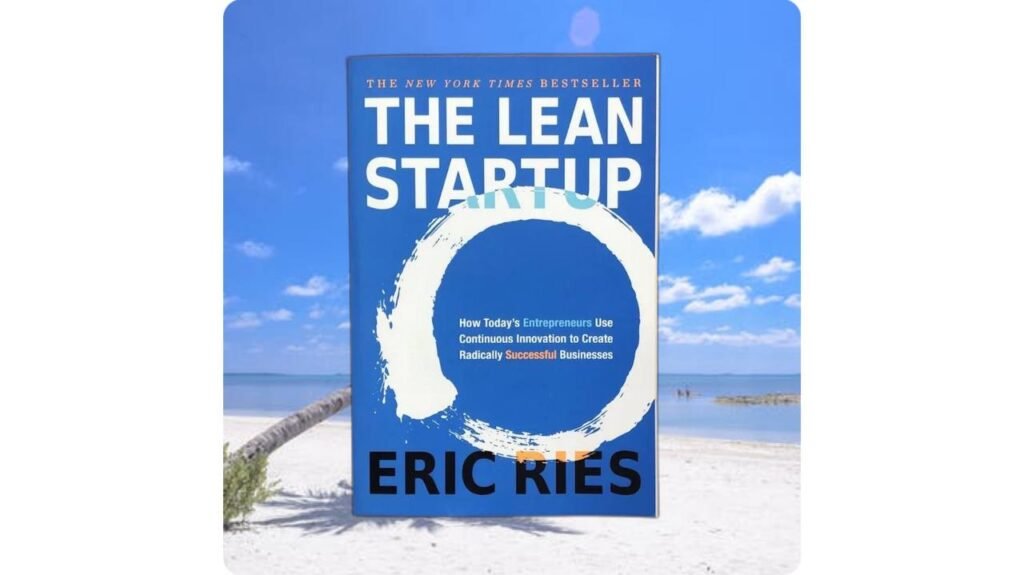
4. “Influence: The Psychology of Persuasion” by Robert Cialdini
- Core Concepts: This book explores the psychological principles that underlie persuasion and influence. Cialdini outlines six key principles of influence, including reciprocity, scarcity, and authority.
- Key Takeaways: Understand the underlying motivations and psychological triggers that influence human behavior. Use these principles ethically and effectively in your personal and professional life.
- Impact: “Influence” has become a classic in the field of social psychology and has had a profound impact on marketing, sales, and negotiation.
“Influence: The Psychology of Persuasion” by Robert Cialdini is a groundbreaking book that explores the psychological principles that underlie persuasion and the factors that influence human behavior. Drawing from extensive research, Cialdini presents six key principles of persuasion:
1. Reciprocity:
* Core Concept: People feel obligated to return favors or concessions.
* Examples: * Receiving a small gift from a salesperson can increase your likelihood of buying from them.
* Offering a small favor to someone before asking for a larger one.
* Defense: * Recognize when someone is trying to use the reciprocity principle to their advantage.
* Don’t feel obligated to reciprocate every favor, especially if it’s a one-sided exchange.
2. Commitment and Consistency:
* Core Concept: People have a strong desire to be consistent with their words and actions.
* Examples: * Publicly committing to a goal makes you more likely to achieve it.
* Signing a small petition can increase your likelihood of donating to a related cause.
* Defense: * Carefully consider your commitments before making them.
* Be aware of the “foot-in-the-door” technique, where a small initial request is used to gain compliance with a larger request.
3. Social Proof:
* Core Concept: People are more likely to do something if they see others doing it.
* Examples: * Seeing long lines at a restaurant can make you think it’s a good place to eat.
* Testimonials and reviews from other customers can influence your purchasing decisions.
* Defense: * Question the authenticity and objectivity of social proof. * Look for independent and unbiased sources of information.
4. Liking:
* Core Concept: People are more likely to say “yes” to those they like and trust.
* Examples: * Salespeople who build rapport with their customers are more likely to make a sale.
* People are more likely to comply with requests from friends and family.
* Defense: * Separate the person from the request.
* Focus on the merits of the request itself, rather than the person making it.
5. Authority:
* Core Concept: People tend to obey authority figures, even when their requests are unreasonable.
* Examples: * People are more likely to follow the instructions of a doctor or a police officer.
* Titles and uniforms can convey authority and increase compliance.
* Defense: * Question the authority figure’s expertise and motives.
* Seek a second opinion from a trusted source.
6. Scarcity:
* Core Concept: People place a higher value on things that are scarce or limited in availability.
* Examples: * Limited-time offers and exclusive deals can create a sense of urgency and increase demand.
* Rare items are often perceived as more valuable.
* Defense: * Ask yourself if the scarcity is genuine or artificially created.
* Don’t succumb to pressure to make a decision quickly.
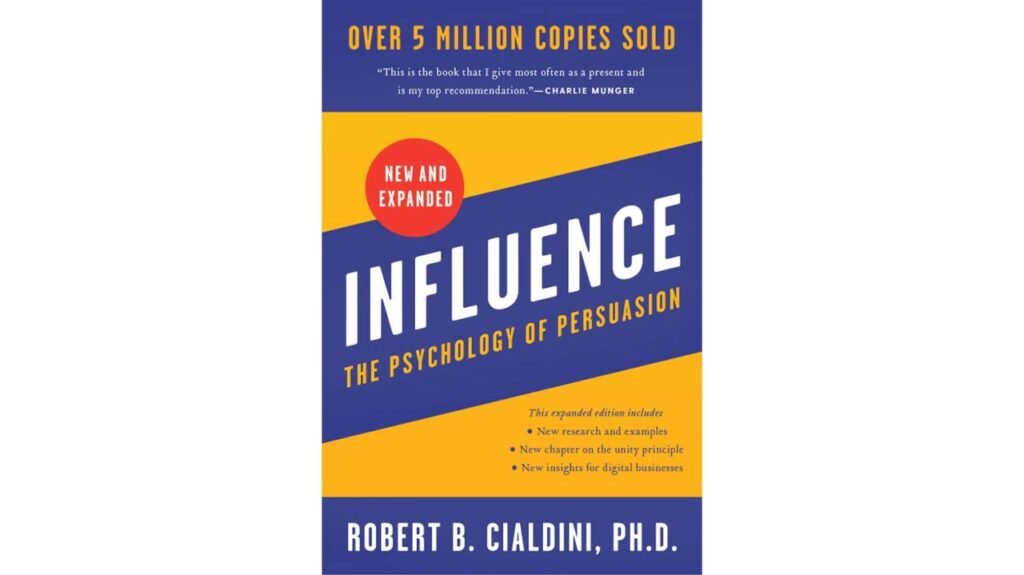
3. “Good to Great” by Jim Collins
Impact: “Good to Great” has significantly influenced business strategy and leadership practices, providing valuable insights for organizations striving for excellence.
Core Concepts: This book examines the factors that differentiate good companies from truly great ones. Collins identifies key disciplines, such as disciplined people, disciplined thought, and disciplined action, that drive sustained success.
Key Takeaways: Focus on building a strong foundation, hire the right people, and cultivate a culture of discipline and accountability.
“Good to Great” by Jim Collins
This influential book delves into the factors that differentiate good companies from truly great ones. Through rigorous research and analysis, Collins and his team studied 11 pairs of companies, comparing companies that made the leap from good to great with their closest competitors that remained merely good.
Key Criticisms:
- Selection Bias: Some critics have argued that the selection of companies for the study may have introduced a bias, as the criteria for inclusion were not entirely objective.
- Oversimplification: Critics argue that the book oversimplifies complex business challenges and may not be applicable to all situations.
- Lack of Predictive Power: Some argue that the principles outlined in the book may not be sufficient to predict future success in the rapidly evolving business landscape.
Despite these criticisms, “Good to Great” remains a highly influential and insightful book that offers valuable lessons for leaders and organizations striving for excellence. By focusing on fundamental principles, cultivating a strong culture, and embracing disciplined execution, companies can increase their chances of achieving sustained success and making the leap from good to great.
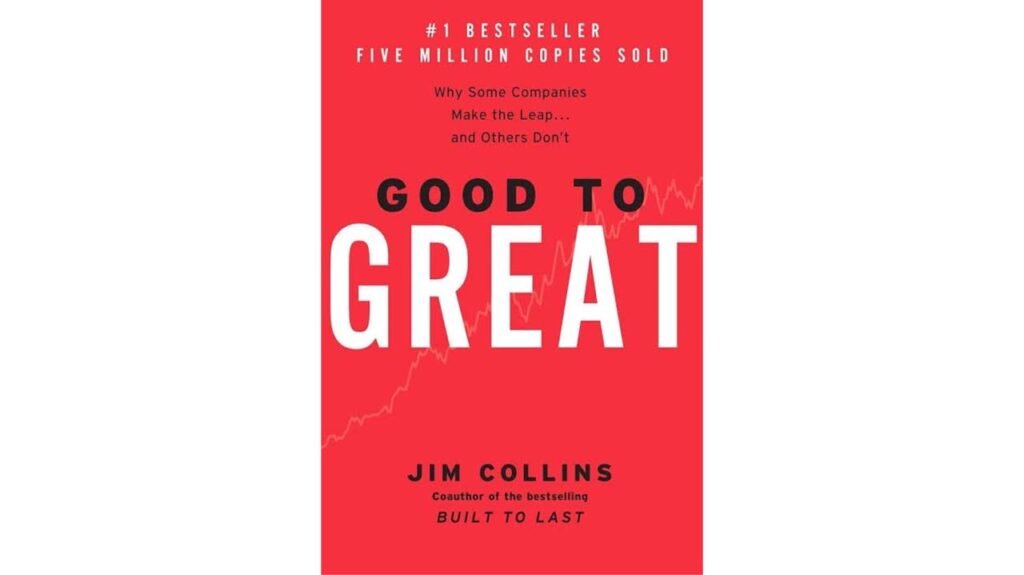
2. “The 7 Habits of Highly Effective People” by Stephen R. Covey
- Core Concepts: This influential book focuses on developing effective personal and interpersonal skills. Covey outlines seven principles for personal and professional effectiveness, including proactiveness, prioritizing, and seeking first to understand, then to be understood.
- Key Takeaways: Develop strong character, prioritize long-term goals, and build meaningful relationships. Focus on principles and values rather than short-term gains.
- Impact: “The 7 Habits” has become a cornerstone of leadership development programs and has helped countless individuals improve their personal and professional lives.

1. “Think and Grow Rich” by Napoleon Hill
- Core Concepts: This timeless classic delves into the psychology of success, emphasizing the power of thought, desire, and perseverance. Hill outlines 13 principles for achieving wealth, including self-confidence, persistence, and the importance of a master mind.
- Key Takeaways: Cultivate a positive mindset, set clear goals, and take consistent action towards achieving them. Believe in your abilities and never give up on your dreams.
- Impact: “Think and Grow Rich” has inspired generations of entrepreneurs and continues to be a foundational text for personal and professional development.
“Think and Grow Rich” by Napoleon Hill
This timeless classic, first published in 1937, delves into the psychology of success, exploring how individuals can achieve wealth and fulfillment by harnessing the power of their minds.
Key Concepts:
- The Power of Thought: Hill emphasizes that thoughts are the building blocks of reality. By cultivating positive thoughts and visualizing success, individuals can attract abundance and achieve their goals.
- The 13 Principles of Success: The book outlines 13 key principles for achieving wealth, including:
- Definite Chief Aim: Setting clear, well-defined goals with a burning desire for achievement.
- Self-Confidence: Believing in oneself and one’s ability to achieve success.
- Specialized Knowledge: Acquiring in-depth knowledge and skills in a chosen field.
- Imagination: Using the power of imagination to visualize success and overcome obstacles.
- Organized Planning: Creating a detailed plan of action to achieve your goals.
- Decision: Making firm decisions and taking decisive action.
- Persistence: Persevering through challenges and setbacks without giving up.
- The Mastermind Principle: Collaborating with others to achieve shared goals and leverage collective intelligence.
- The Mystery of Sex Transmutation: Channeling sexual energy into creative and productive pursuits.
- The Subconscious Mind: Utilizing the power of the subconscious mind to achieve goals through autosuggestion and visualization.
- The Brain: Developing a keen intellect and cultivating a thirst for knowledge.
- The Sixth Sense: Developing intuition and trusting your inner guidance.
- The Mystery of Sex Transmutation: Channeling sexual energy into creative and productive pursuits.
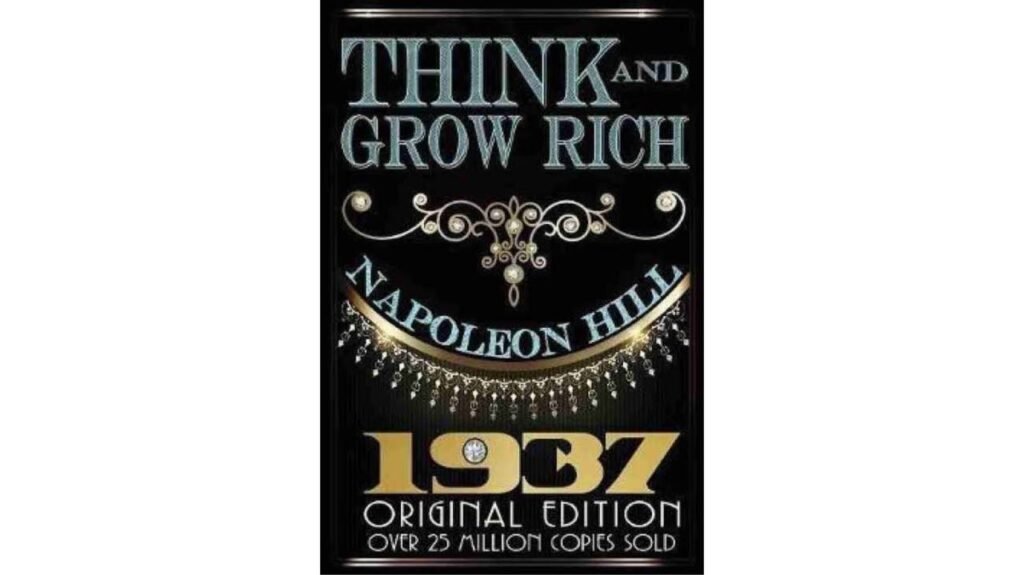
Beyond the Top 10:
- “The E-Myth Revisited” by Michael E. Gerber: This book challenges entrepreneurs to think of their businesses as systems rather than simply focusing on their own skills and expertise.
- “Blue Ocean Strategy” by W. Chan Kim and Renée Mauborgne: This book explores how businesses can create uncontested market space and achieve sustainable growth by challenging the status quo.
- “The Power of Habit” by Charles Duhigg: This book delves into the science of habit formation and explores how habits shape our lives and influence our behavior.
- “Daring Greatly” by Brené Brown: This book explores the power of vulnerability and courage in leadership and personal relationships.
- “The Art of Possibility” by Rosamund Stone Zander and Benjamin Zander: This book offers a framework for shifting your perspective and unlocking your full potential.
Reading Business Books: A Continuous Journey
Reading business books is an ongoing process of learning and growth.
FAQs
Q: What criteria were used to select these “best” business books?
A: The selection is based on a combination of factors, including: Impact and influence: The book’s impact on business thinking and practice.
Relevance and timelessness: How well the book’s concepts hold up over time.
Practicality and applicability: How easily readers can apply the book’s lessons to their own businesses or careers.
Critical acclaim and reviews: Positive reviews from critics and readers.
Sales and popularity: The book’s commercial success and readership.
Variety of topics: Covering a range of business areas like leadership, strategy, marketing, finance, and entrepreneurship.
Q: Are these books only for experienced business owners or are there recommendations for beginners as well?
A: The list should ideally cater to a range of readers, including beginners, entrepreneurs, managers, and executives. Some books might focus on foundational concepts suitable for those new to business, while others might delve into more advanced strategies for experienced professionals. The blog post should clearly indicate the target audience for each book.
Q: Are these books only about large corporations, or are there recommendations for small businesses and startups?
A: The list should ideally include books relevant to different business sizes and structures. While some books might focus on large corporations and their strategies, others should offer valuable insights for small businesses, startups, and entrepreneurs.
Q: Are these books only focused on profit-making businesses, or are there recommendations for non-profits or social enterprises?
A: While most business books focus on profit-making ventures, some might offer relevant principles and strategies applicable to non-profits or social enterprises. The blog post should clarify the focus of each book.
Q: How should I approach reading these business books to get the most out of them?
A: To maximize the value of reading business books: Set clear goals: Determine what you hope to gain from reading the book.
Take notes and highlight key passages: This will help you retain important information.
Apply the concepts: Actively try to implement the book’s lessons in your own work or business.
Discuss the ideas with others: Sharing your insights and discussing the book with colleagues or mentors can deepen your understanding.
Revisit the book periodically: Re-reading key sections can reinforce your learning and provide new insights over time.

